A planetary nebula, despite the name, has little to do with planets. In fact, planetary nebulae are one of the last stages of a Sun-like star's life, as it begins to expand in size and shed its outer layers into space.
When this happens, it produces a round, puffed-up object that looks rather like a planet: hence the name.
It is possible to observe these dying stars through relatively modest telescopes, providing you know where to look.
The plane of the Milky Way is a great place to locate planetary nebulae, and here are 6 examples worth seeking out in the night sky during late summer and early autumn.
More deep-sky tours:
- 8 Messier objects to spot in the night sky
- How far can you see into space? A deep-sky tour
- Take an astronomy tour of Ursa Major
1
NGC 6891
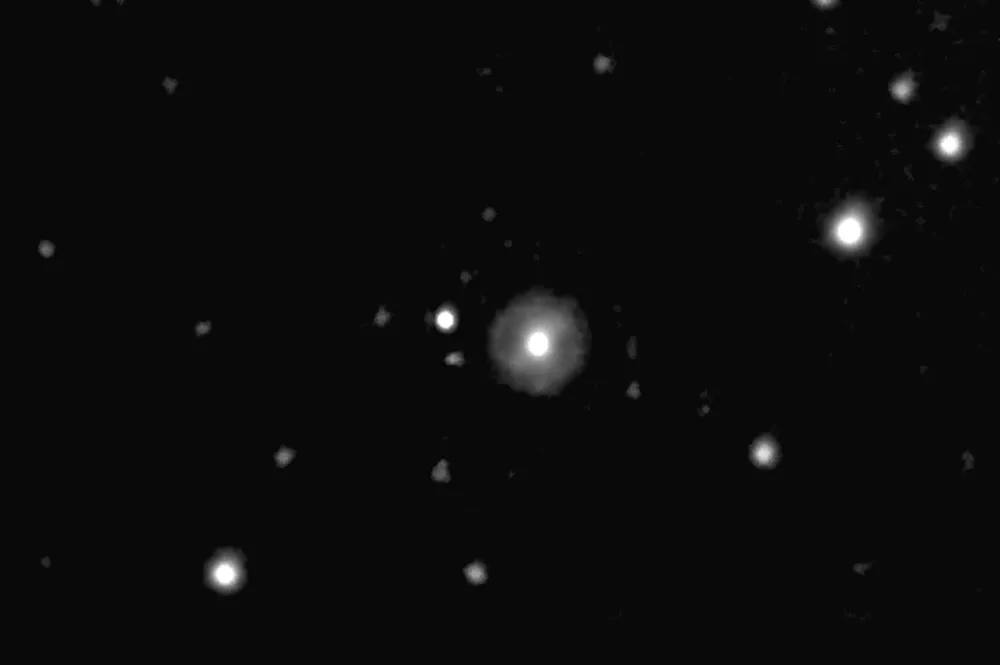
Best seen with:
- Small/medium scope refractor/SCT under 6 inches, refractor under 4 inches
- Large scope reflector/SCT over 6 inches, refractor over 4 inches
We start with NGC 6891, which sits on the Delphinus-Aquila border. It lies 2.5˚ south of the star Rho (ρ) Aquilae. Despite being an Aquila star, Rho technically sits within Delphinus.
NGC 6891 shines with an integrated magnitude of 10.5 and is around one-third of an arcminute across. A 150mm scope will show it, although it’s easy to mistake as a star.
As ever with planetary nebulae, carefully increased magnification works best. The central star for this object is mag. 12.4 and is easy to see with a 250mm scope
2
IC 4997
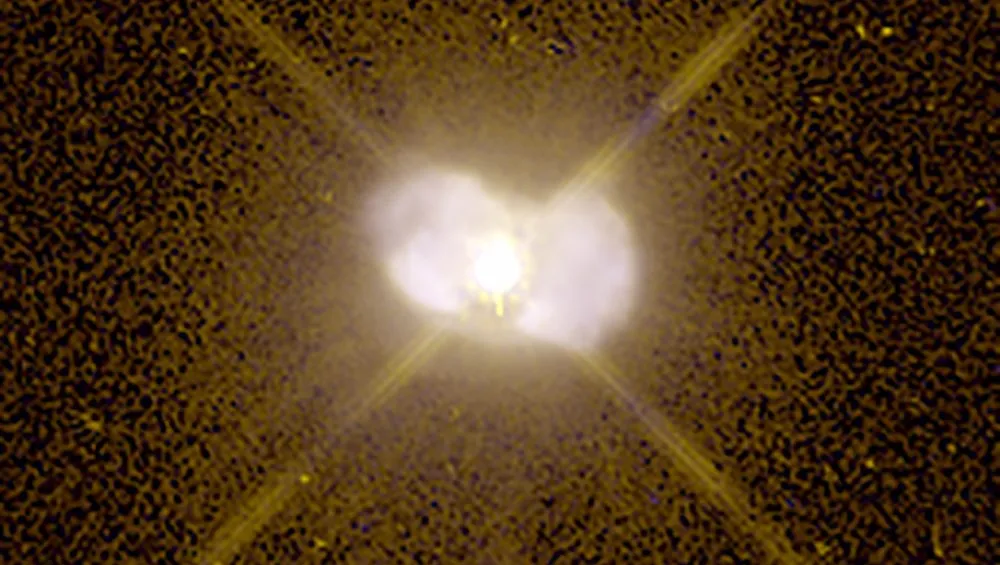
Best seen with:
- Large scope reflector/SCT over 6 inches, refractor over 4 inches
Return to Rho Aquilae and look 2.1˚ northeast to find IC 4997. Located in the southwest corner of Sagitta, this planetary is a visual test because it’s faint at mag. 12.0, and small at just 2 arcseconds across.
To most people it will appear like a dim star. Using an OIII filter will help it stand out. If you have a large scope, you’ll need a high magnification to see any structure.
The nebula has a bi-lobe appearance, two glowing ‘ears’ either side of a 14th magnitude central star. It’s believed to be a young planetary, with some estimates saying it formed just 700 years ago
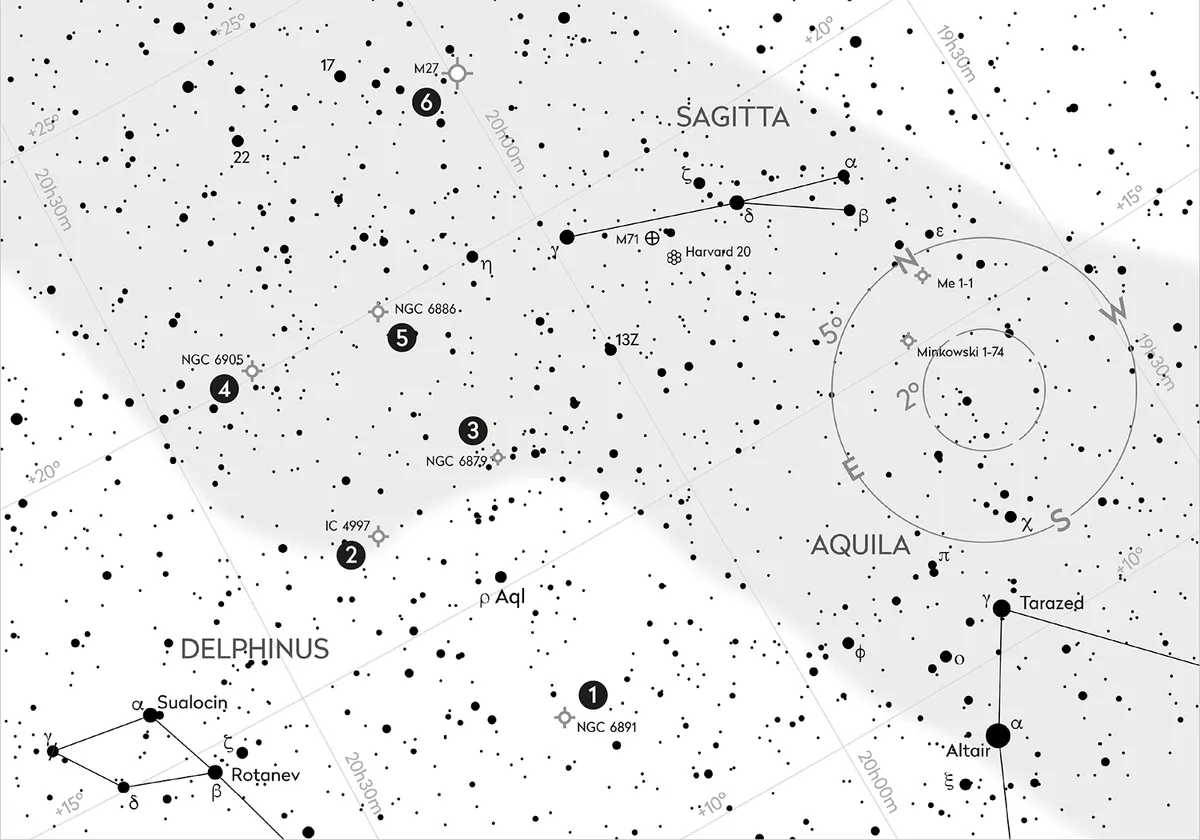
3
NGC 6879
Best seen with:
- Large scope reflector/SCT over 6 inches, refractor over 4 inches
Return again to Rho Aquilae and head 1.9˚ north-northwest to locate NGC 6879. This planetary doesn’t show a great deal of detail through amateur scopes. The challenge is just being able to find it.
It shines with an integrated magnitude of 12.5 and appears for the most part quite stellar.
Being just a few arcseconds across its propensity to masquerade as a star, combined with its location against a rich background star field, makes identification tricky.
If you have an OIII filter this is where this essential tool of the planetary nebula hunter comes into its own. The filter dims surrounding stars while allowing many emissions from the nebula through.
s a consequence, when an OIII filter is used, the nebula should become fairly obvious
4
NGC 6905

Best seen with:
- Small/medium scope refractor/SCT under 6 inches, refractor under 4 inches
- Large scope reflector/SCT over 6 inches, refractor over 4 inches
For our next target we return to Delphinus. Nestled in the northwest corner of this constellation, 5.2˚ north-northeast of Rho Aquilae, is planetary nebula NGC 6905, also known as the Blue Flash Nebula.
It shines at mag. 11.1 and is nearly 40 arcseconds across. A 150mm scope shows it as a circular, uniform patch of light, best around 100x to 150x magnification.
A 200mm instrument shows an almost oblong appearance, while 250mm reveals a gentle glow increasing towards the centre.
Larger apertures will show the nebula with a distinct blue colour and a mottled appearance.
GC 6905 sits within a triangle of mag. 10.6, 11.5 and 11.6 stars. The nebula’s central star shines at mag. 14.2
5
NGC 6886
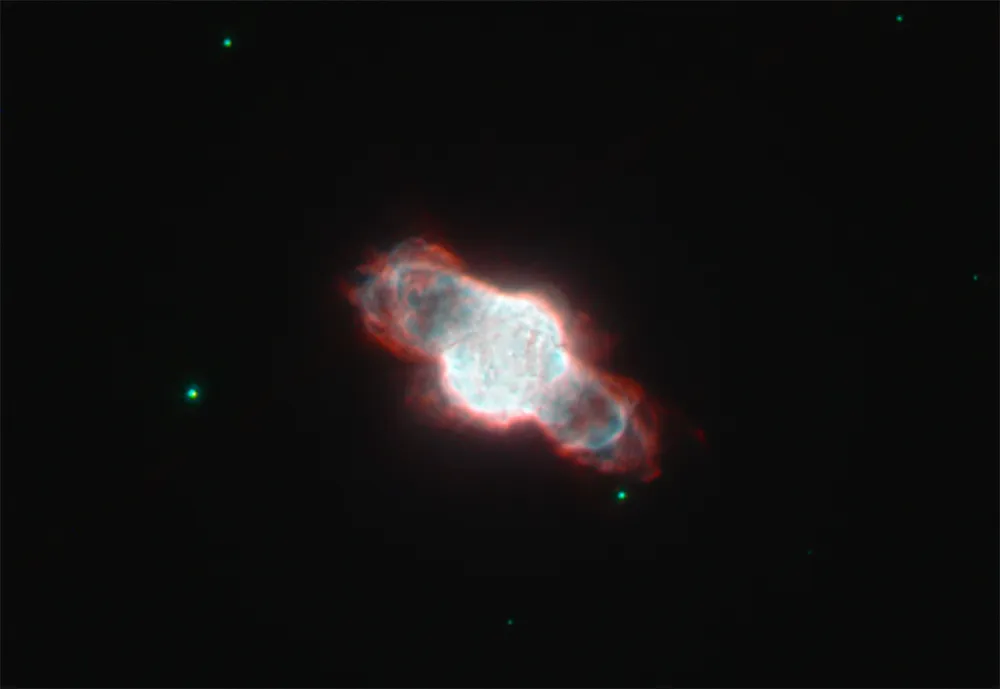
Best seen with:
- Large scope reflector/SCT over 6 inches, refractor over 4 inches
We hop over the border back into Sagitta for planetary nebula NGC 6886. This can be found 4.8˚ north of Rho Aquilae.
This nebula shines with an integrated magnitude of 11.4, only a fraction dimmer than NGC 6905, but it’s smaller at just 9 arcseconds across, giving it a slightly improved surface brightness.
The nebula is probably best identified through the part it plays in forming a small pointed triangle with two other stars of mag. 10.3 and 11.1. The nebula marks the western vertex of this almost-isosceles, east-northeast pointing triangle.
A 250mm scope shows little more than a stellar dot here. It takes a 300mm instrument with a magnification of over 400x to begin to show NGC 6886 as a green hued disc
6
M27
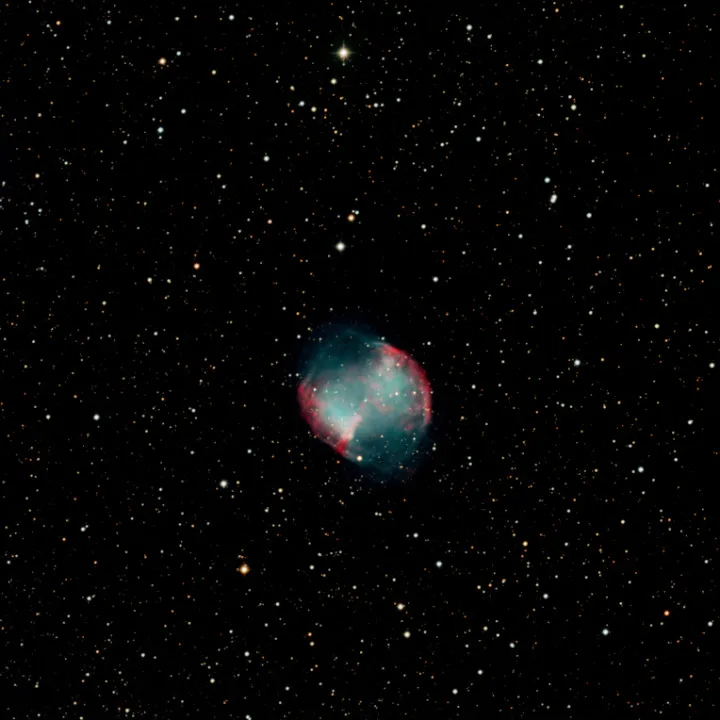
Best seen with:
- Small/medium scope refractor/SCT under 6 inches, refractor under 4 inches
- Large scope reflector/SCT over 6 inches, refractor over 4 inches
The Dumbbell Nebula, M27, is a superb example of its class. The planetary can be found 3.2˚ north of Gamma (γ) Sagittae and shines with an integrated magnitude of +7.3. At 8.0 x 5.7 arcminutes in size it’s a large object.
A 150mm instrument shows M27’s characteristic ‘apple core’ appearance, two bright lobes symmetrically located about the object’s centre.
Careful examination reveals the lobes to be of unequal brightness, that to the southwest appearing brighter. M27’s central star shines at mag. +13.8.
Pete Lawrence is an experienced astronomer and co-host of The Sky at Night. This tour first appeared in the September 2020 issue of BBC Sky at Night Magazine.
